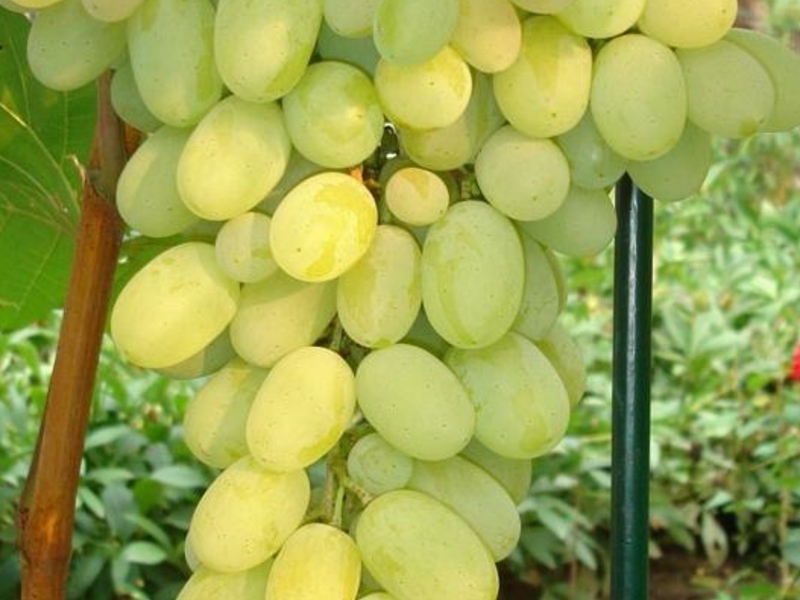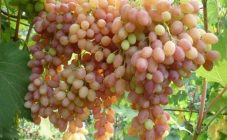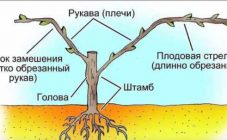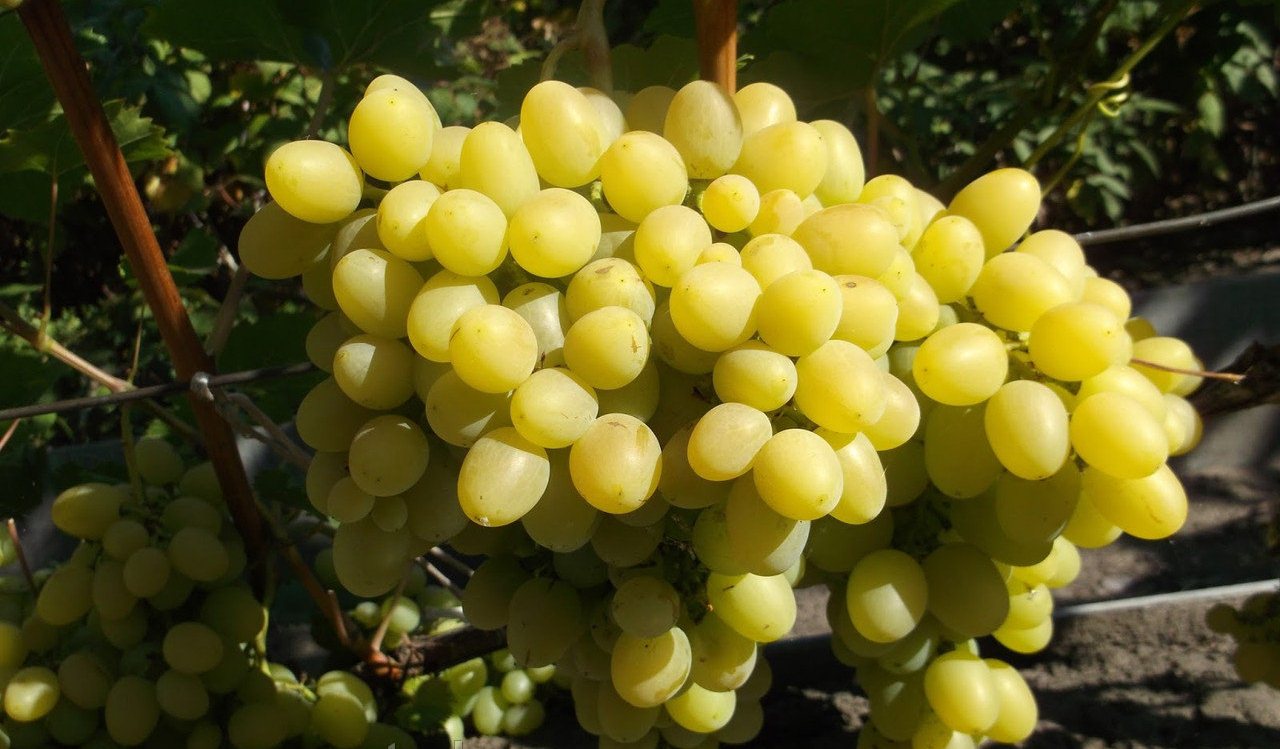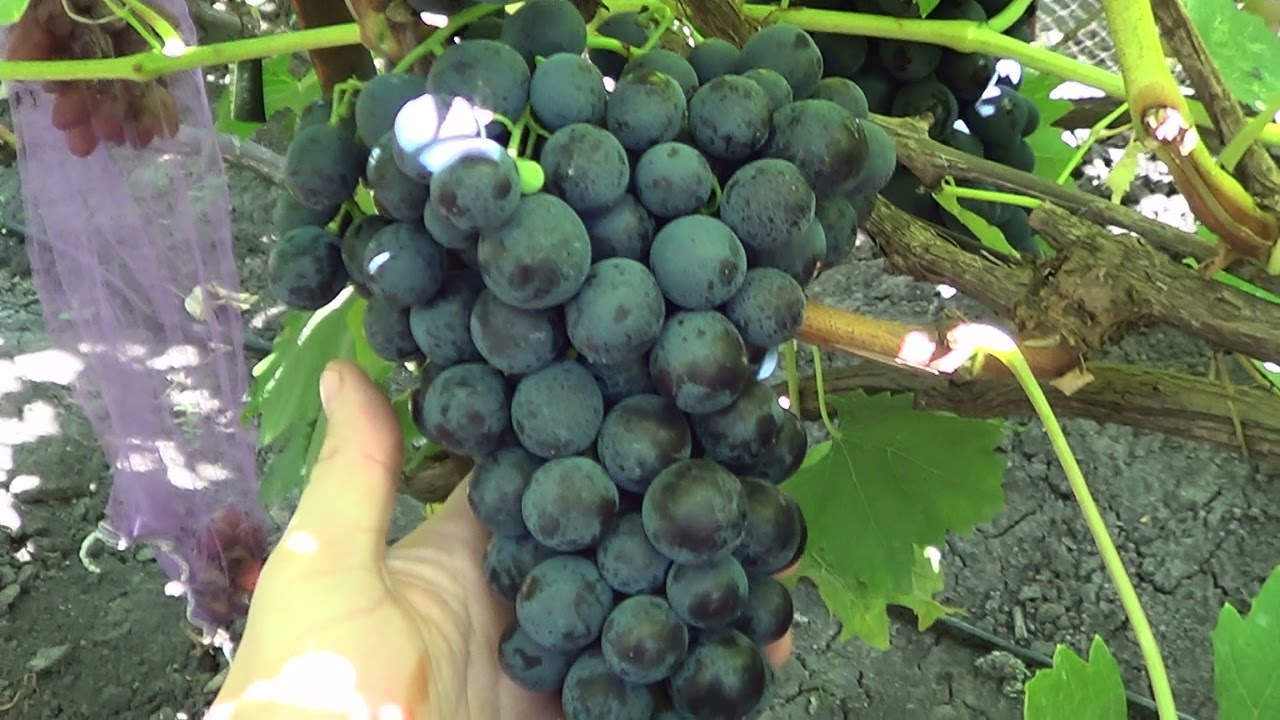Content:
The Pleven grapes owe their origin to Bulgarian breeders. It was obtained by crossing the grapes Italy and Amber. The variety came out hygrophilous, with a sugar content of up to 20%. It has earned recognition both for its excellent taste and for its extremely high frost resistance.
Characteristics and description of Pleven grapes
Pleven is famous for its survival rate and frost resistance. It has early fruiting, and by mid-August the brushes are fully ripe. Many varieties undergo peas, but this does not apply to Pleven. Novice growers can safely train their gardening skills with him. Even if it is not possible to pick the grapes on time, there are 2-3 weeks in stock, which the bunches can calmly stay on the vine and not lose their taste and quality. In addition to other positive aspects, it has such a feature as bisexuality. Therefore, it is able to pollinate varieties with female flowering, and the quality of pollination does not depend on the weather.
Upon reaching ripeness, Pleven has amber or yellow shades of berries, and their shape is round and oblong, 2x3 cm in size.
Undoubtedly, gardeners will be pleased with the fact that grapes can withstand temperatures down to -23 ° C, but it is still worth taking care of it and covering it with heat-saving material for the winter.
All work on breeding Pleven was carried out for a very long time and painstakingly, and in addition to the main variety, scientists continued to develop other varieties that could show greater frost resistance. Thus, no less well-known varieties of Muscat and Resistant Pleven appeared, which should be described in more detail.
Pleven: Resistant grape variety
This new form of Pleven has established itself as the highest cold resistance among other forms.
The Sustainable harvest begins in mid-August. Its appearance does not differ much from the original Pleven. The grapes are white and with juicy pulp. The density of the hand is average, and its weight can be up to 0.5 kg. So one bush can bring up to 25-30 kg of grapes. By its nature, this subspecies is unpretentious, and the crop tolerates long-term transportation well without losing its presentation.
Pleven: Muscat grape
Pleven Muscat is also early maturing, has a high yield and resistance.
This variety is characterized by the white color and oval shape of the berries with a dense skin and juicy pulp. The mass of one berry is 6-8g, the size is 2.3x3 cm, and the bunch itself grows from 600 g.
The peculiarity of this Pleven subspecies is a characteristic nutmeg aroma, which does not allow it to be confused with other varieties.
Gardeners often pay attention to Pleven Muscat and seek to replenish their vineyards with it, since the variety takes root in almost all conditions, has active growth and strong shoots.
Cultivation of Pleven grapes
The first thing to do is to work with the territory and select a site that is well lit and warmed up by the sun. Since the culture, although it loves moisture, does not tolerate stagnant water, then a place on a hill is just right. In addition, the air on the slope is not so cold.
If the region is northern, then they try to place the culture on the southern side of the site and where nothing will block access to the sun.
For grapes, sandy loam soil or loam is best suited.
Before planting, Pleven saplings must be examined and selected only those that are strong, with healthy buds and have grown to 0.5 m. Damage, underdevelopment or excessive dryness of the root can prevent the plant from taking root normally.
Wells for grapes are prepared in advance, filling with humus and fertile soil by a third.
The distance between the vines must be kept in the interval of 1.5–2 m, and the plant itself needs support.
After planting has taken place, the soil near the vines must be mulched, and for the first 10 days it constantly controls the moisture of the earth so that it does not dry out.
Since Pleven grapes are unpretentious, further care for them consists only in subcrusting, timely pruning and watering. Young bushes that have not reached 3 years old especially need regular watering. After removing the winter shelter in the spring, during the formation of buds and mass flowering, in the fall, maintaining the required moisture should be of paramount importance.
Top dressing and pruning of grapes
Pleven is fed during early spring with nitrogen-containing fertilizer. It activates the rapid growth of shoots. In addition, superphosphate and urea minerals are used. You can also replace these substances with organic matter - manure or chicken droppings.
Re-feeding occurs before the beginning of flowering, but then potash and phosphorus fertilizers are already used, directing all forces to the ovary and the formation of berries.
Foliar treatments also have a beneficial effect on grapes. Many gardeners use for this spraying with Aquarin or Kemira preparations.
And already at the end, when the harvest season is over, the last fertilizing with wood ash is introduced into the soil.
As for pruning, its purpose is to increase fruiting. Thoroughly prune Pleven grapes in the fall, when the harvest is completely removed.
The best option is when the plant has 35 to 45 eyes.
After winter and snow melt, old and dry branches are cut off, or those that have frozen out during cold weather.
In the spring, the number of bunches is normalized, which implies the selection of 1-2 inflorescences on the fruit and the removal of all the rest.
In the summer, significant pruning is not done, except that the leaves are removed to increase the sugar content in the bunch. If there are extra stepsons, then they are removed.
Diseases and pests
The Pleven grapes and their varieties, with proper care and the absence of overflow, are rarely subject to any diseases. Preventive spraying in early spring and late autumn with preparations for fungal diseases is also required.
Of the pests, grapes are loved by caterpillars, golden beetles, ticks and other insects. It is worth worrying about the defeat of the grapevine, because because of it, the process of decay of the berries can begin. If someone is found, it is necessary to purchase a special tool, depending on what type of pest attacked.
Another danger for Pleven is wasps and birds, but to protect yourself from them, it is enough to cover your hands with cloth bags.
Advantages and disadvantages
Advantages of Pleven grapes:
- high growth rate of vines;
- frost resistance;
- pollination occurs in any conditions;
- excellent productivity;
- hassle-free rooting.
Disadvantages of the variety:
- large bones;
- grapes require frequent watering, but do not tolerate stagnant water;
Despite the fact that the possibility of plant disease scares many, everyone can cope with caring for it.The Pleven grape is a reliable variety that will not leave a gardener without a crop.
